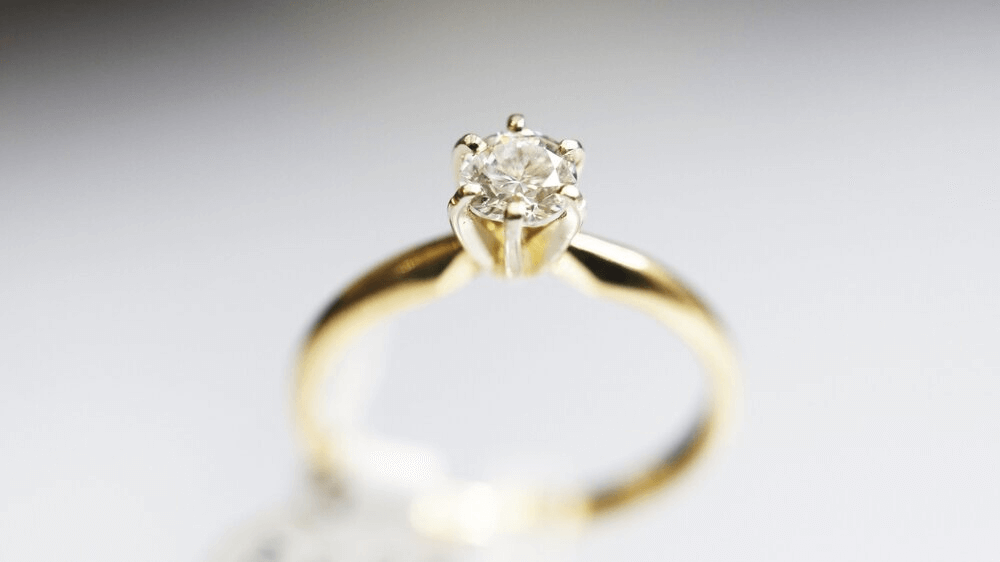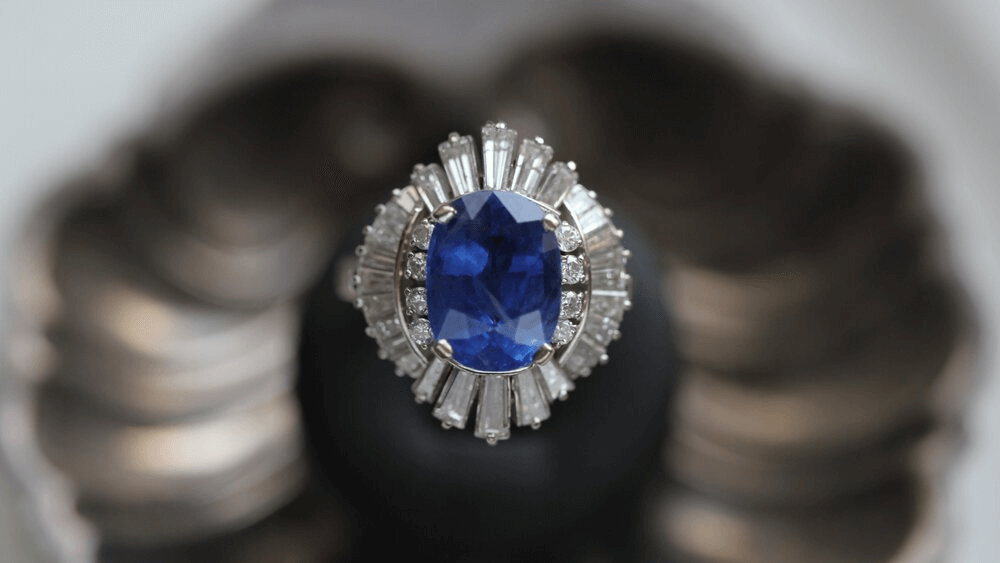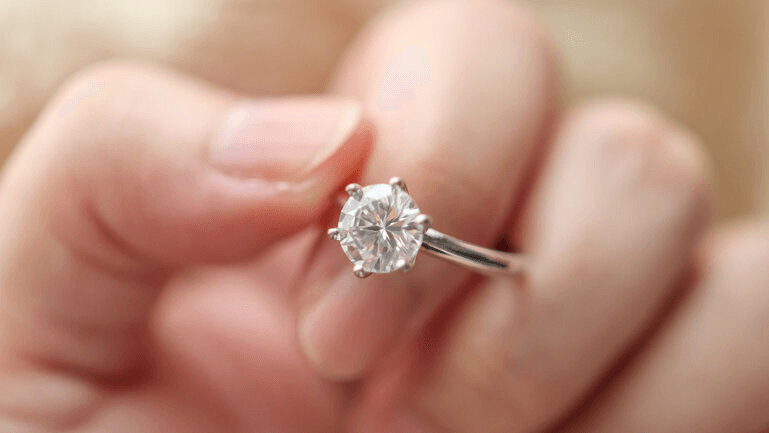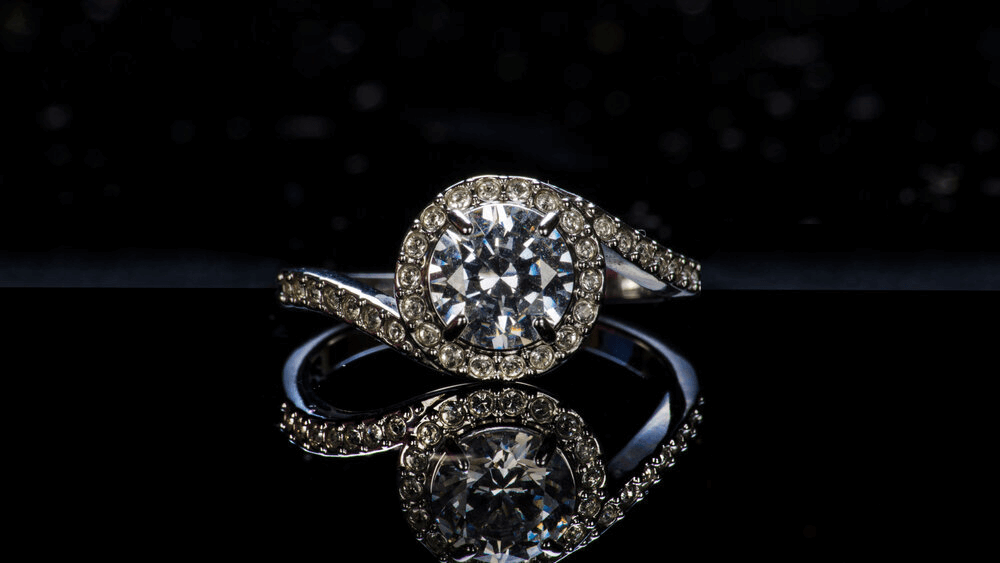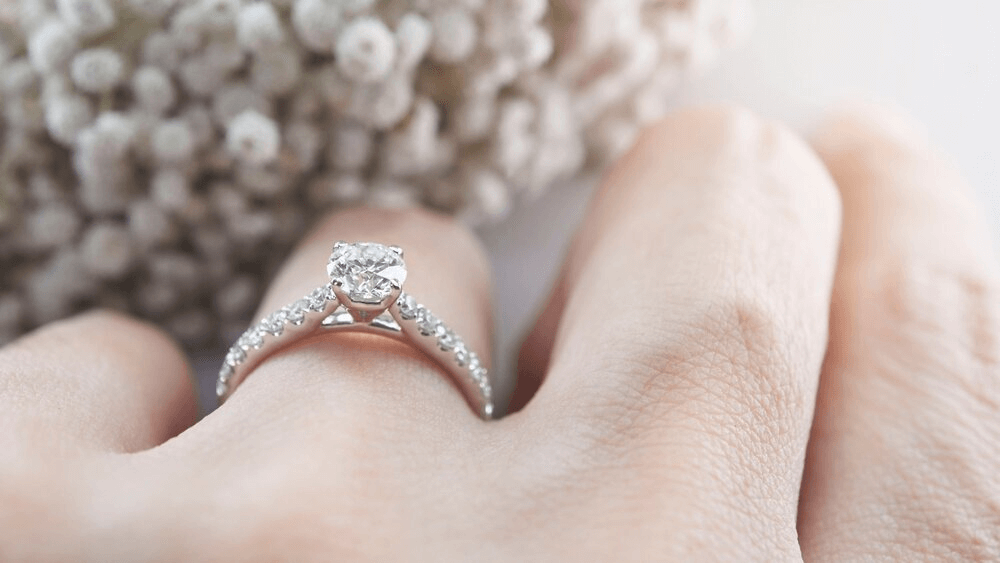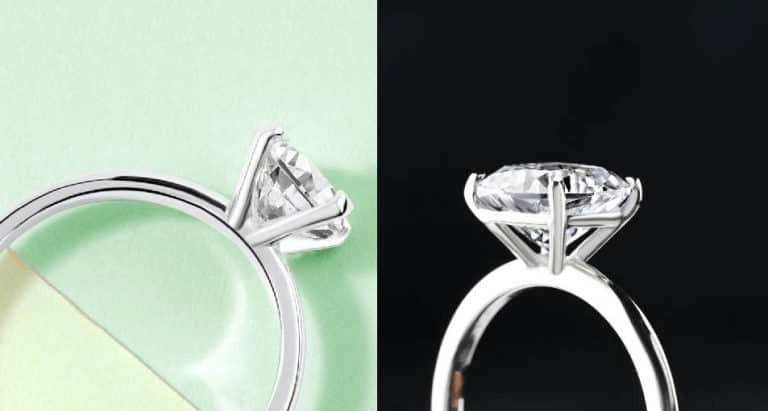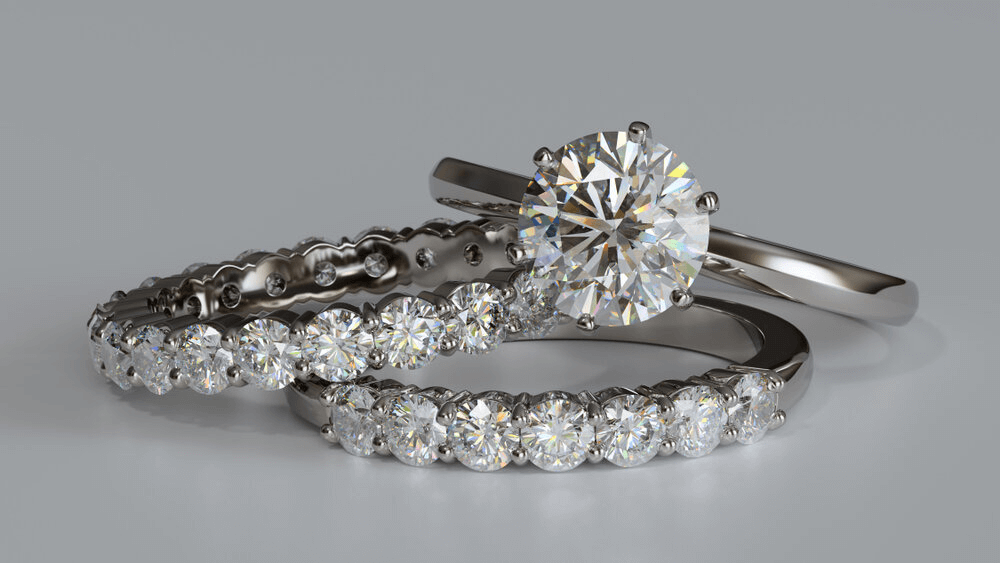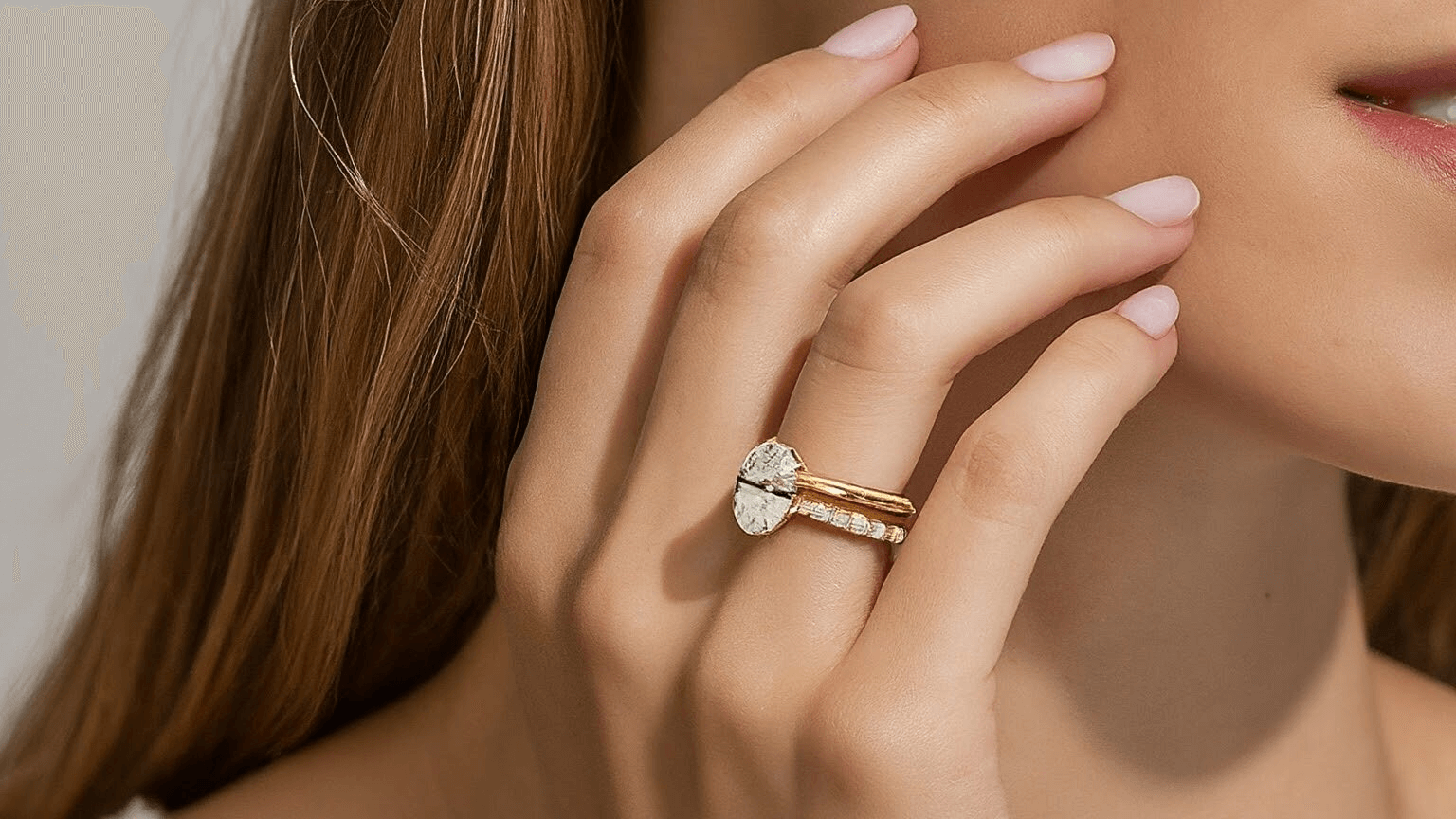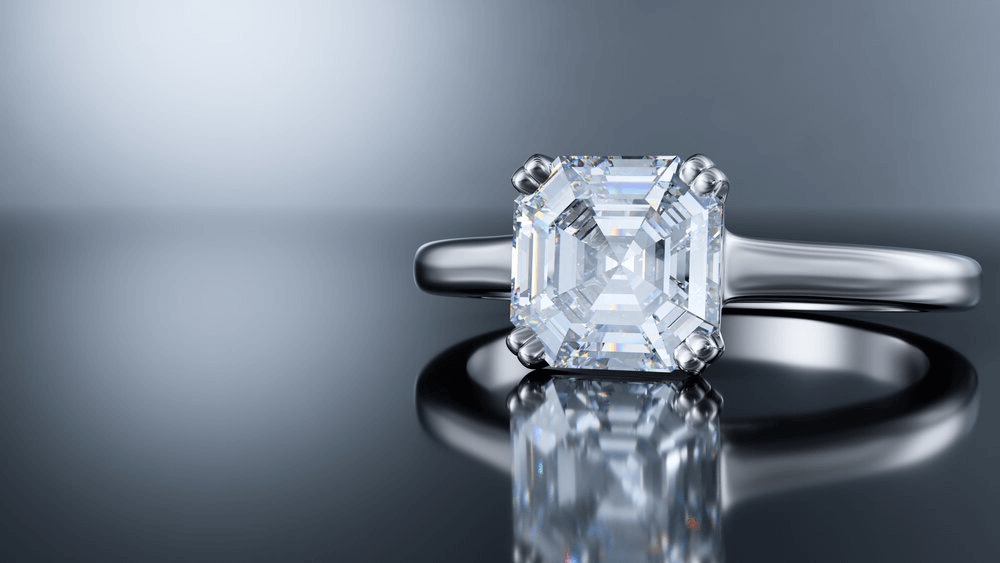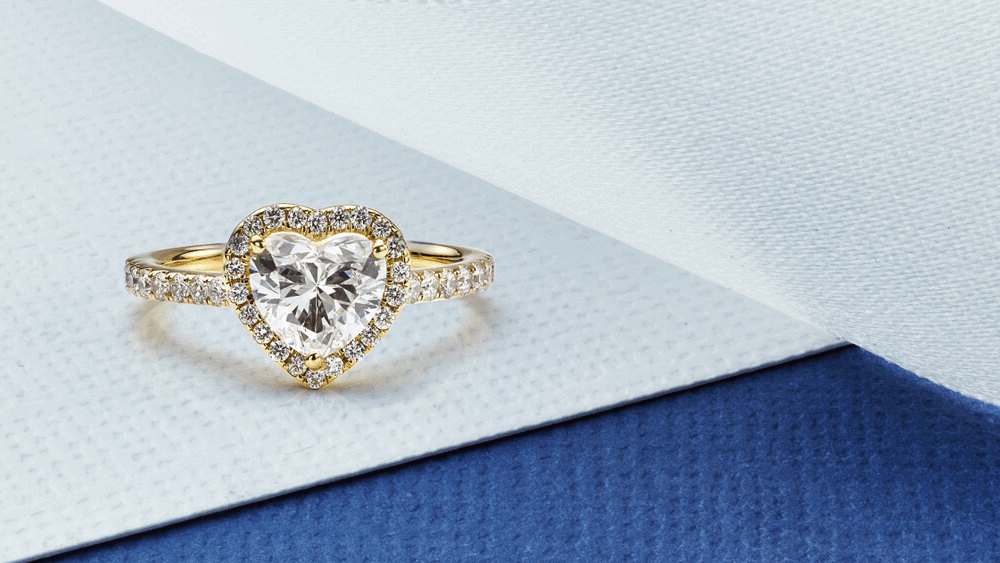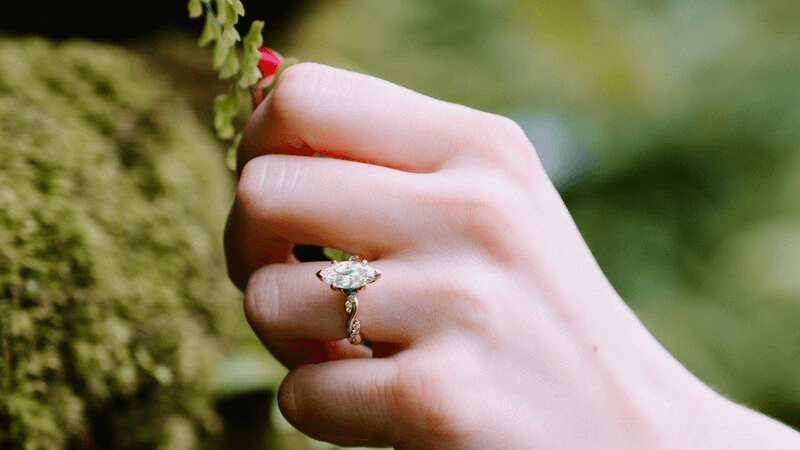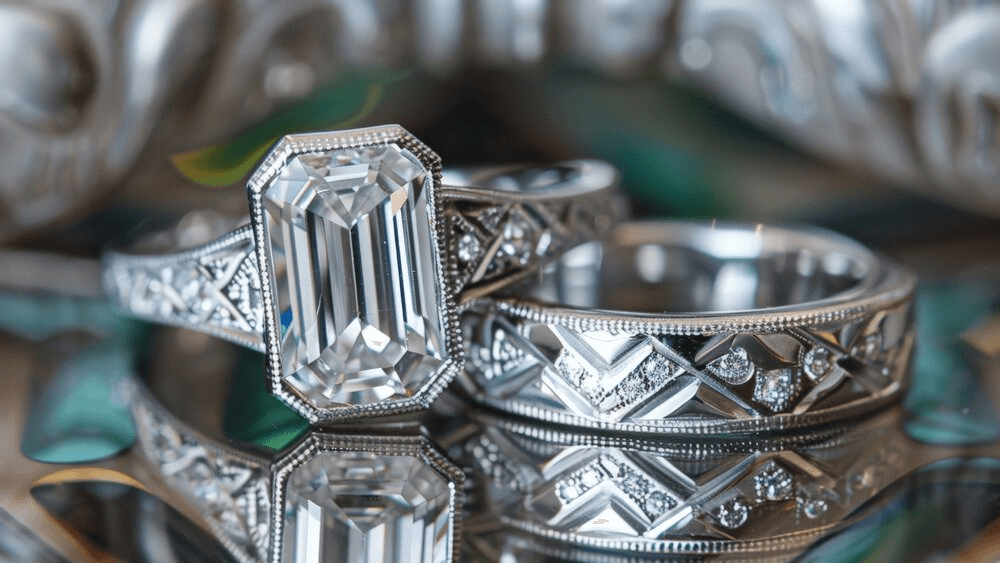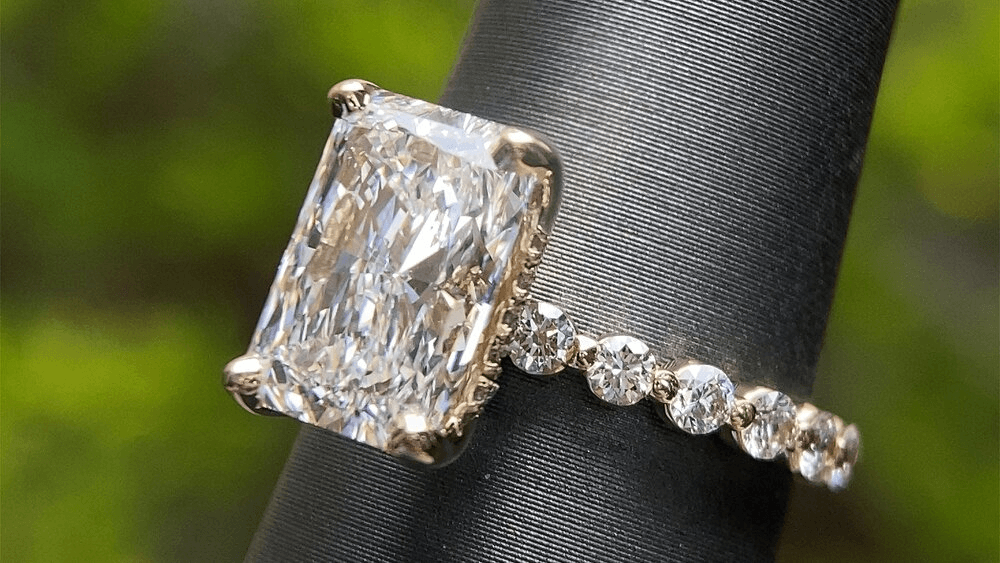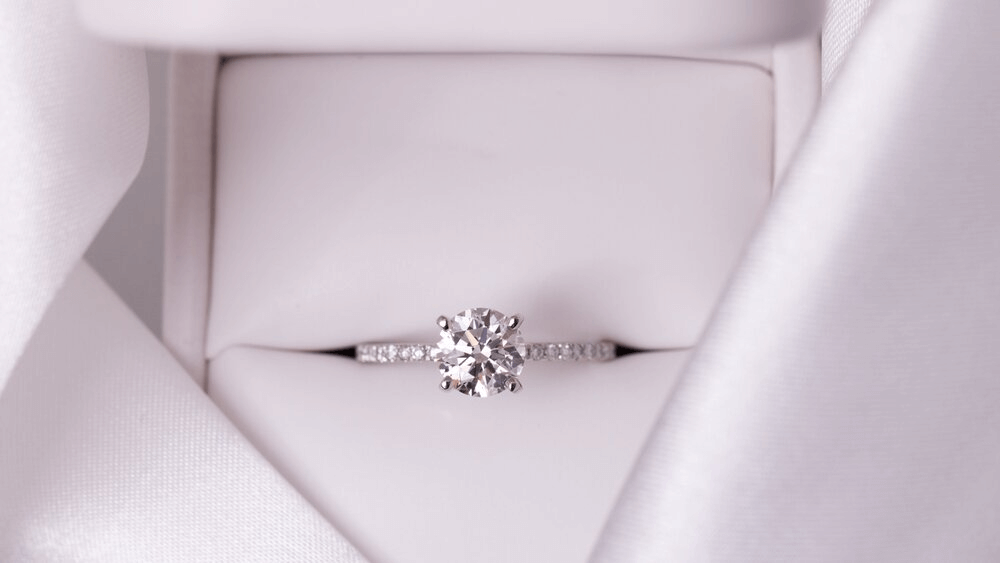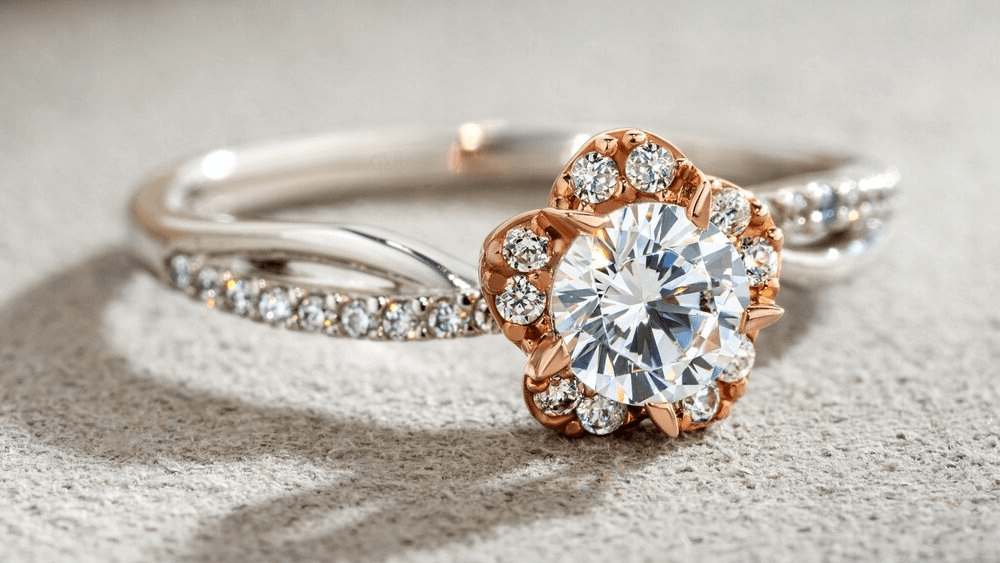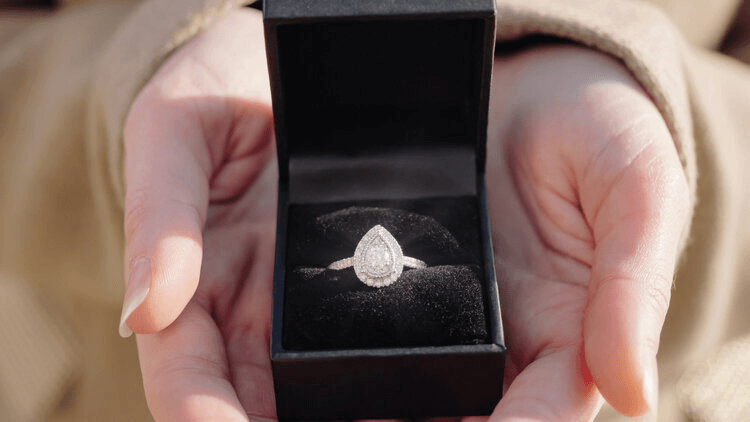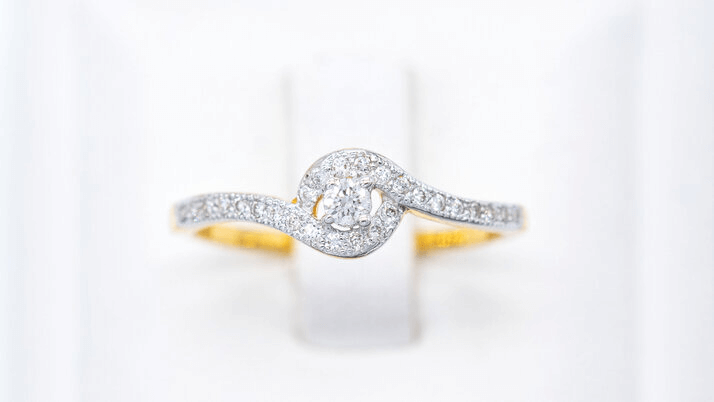Sparkle More, Spend Less with Diamond Accents

By Gary A.

Edited by Olivia H.
Published Mar 13, 2022
Edited on Dec 18, 2024
Diamond accents add a touch of brilliance and elegance to any engagement ring, enhancing its beauty without overshadowing the center stone.

Navigate This Guide:
- 6 Quick Tips for Buying a Diamond Engagement Ring with Diamond Accents
- Introduction to Diamond Accents
- Types of Diamond Accents
- Color: The Importance of Matching with the Center Diamond
- Practical Aspects of Diamond Accents: Clarity
- Diamond Accent Size
- Durability and Maintenance
- Our Expert Take
- 8 FAQs
Before we dive deeper into the specifics, here are some practical tips to help guide your decision-making process:
6 Quick Tips for Buying a Diamond Engagement Ring with Diamond Accents
- Tip 1:Examine the Quality of Accent Diamonds: While the main stone garners most attention, the quality of accent diamonds significantly affects the overall appearance of the ring. Look for uniformity in color and clarity in the accent stones to ensure a harmonious and visually appealing design.
- Tip 2:Proportionate Sizing is Key: The size of the accent diamonds should be proportionate to the main diamond. Too large accent stones can overshadow the central stone, while very small ones might appear insignificant. Aim for a balanced look that complements the main diamond. Consistency in Color and Cut: Ensure that the accent diamonds match the center stone in terms of color and cut. This consistency is crucial for a cohesive and elegant ring appearance. A mismatch can detract from the beauty of the main stone.
- Tip 3:Choose the Right Setting for Accents: The setting of the ring plays a crucial role in accentuating the diamonds. Different settings like pavé, channel, or halo can impact how the accent diamonds are displayed and how they complement the central stone.
- Tip 4:Durability Matters: Check how securely the accent diamonds are set. A durable setting is essential to prevent the loss of these smaller stones. Settings should be robust yet aesthetically pleasing, ensuring the longevity of the ring’s beauty.
- Tip 5:Overall Aesthetic Appeal: Look for a design that resonates with your style preference. The accent diamonds should enhance the ring’s design, adding to its uniqueness and charm. A well-designed ring with diamond accents will stand out for its craftsmanship and style.
- Tip 6:Ensure Certified Quality: While the main diamond often comes with a certification, confirm if the accent diamonds also adhere to certain quality standards. Certifications or assurances of quality for accent diamonds provide an added layer of trust and value to your purchase.
Now that you’ve got these practical tips, use Jeweler AI below to find the perfect engagement ring that suits your style and budget:
Introduction to Diamond Accents
We often talk about rings featuring ‘diamond accents’ but, if you’ve come into this process not knowing a Marquise from a Baguette, or a melee diamond from a fluorescent diamond, then chances are you’re generally left with more questions than answers when we do.
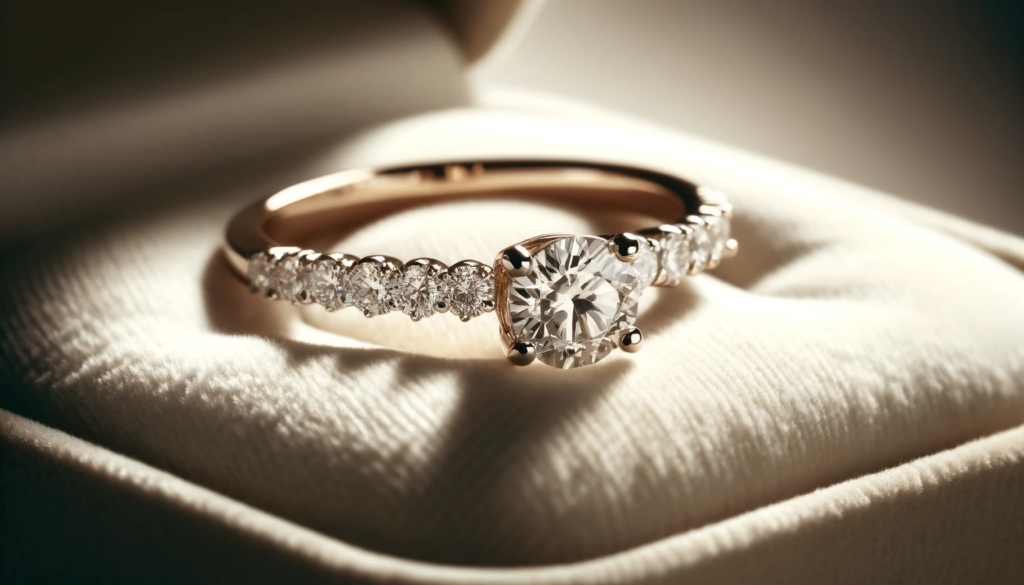
Nature and Definition of Diamond Accents
By now, you’re probably already aware that a diamond accent is a smaller, secondary diamond used to complement the larger diamond at the center of the ring. In other words, they’re not the orchestra, they’re the percussion – they’re not the burger, but the fries on the side.
That’s not to say, of course, that accent diamonds aren’t important. For many, many ring designs, they’re just as important as the center stone – and are, after all, what turns a Solitaire setting into something more unique, more ornate, and more sparkly.
But how do you pick a diamond accent? Is it as complex as picking out the center stone – or can you afford to take it easy, and invest a lot less thought into quality? Here are our pointers…
Diamond Accents vs Primary Diamonds
Diamond accents are just as real as the center diamond used in an engagement ring.
Accents can be made from a long list of gemstones. For color, designers will utilize stones like emerald and sapphire as accents, but the phrase ‘diamond accent’ will always refer to real diamond.
Since accent diamonds are significantly smaller than other diamonds, some people assume that a cheap alternative like cubic zirconia will suffice, but that’s not the case. Real diamond catches the light far more vividly, and will prove a lot more durable in a ring that’s supposed to withstand decades’ of wear. Besides, the diamonds small enough to be used as accents are a lot more affordable than your center stone will be.
But, despite their smaller size, the same considerations for the Four Cs of quality, as well as fluorescence and proportion, that apply to your center stone will apply to the accents.
Types of Diamond Accents
The most common shape for an accent diamond is the Round Brilliant, but they can be virtually any shape.
The Round Brilliant
As you can imagine, the Round Brilliant is such a popular accent as a result of its superior sparkle. Designed to produce more fire and brilliance than any other diamond shape, the accenting your ring with Round Brilliant diamonds will create a captivating light performance. Smaller diamonds sparkle differently to larger diamonds, even if they feature the same shape, and that variation is extremely popular for engagement rings.
Pros: the Round Brilliant offers matchless sparkle, and a classic appearance that makes it perfect for halos, side stones, and pavé bands.
Cons: not great if you want to keep sparkle focused at the center of the ring.
The Baguette
While it may represent the polar opposite to the Round Brilliant, the Baguette is another highly popular choice for ring design. Featuring just 14 facets and either a rectangular or elongated trapezium shape, it’s far better suited for use as an accent stone than the showpiece, and makes it possible for jewelers to capture a more minimalistic vibe, without limiting themselves to the Solitaire shape.
These stones aren’t very sparkly, and their simplistic design means that they won’t overshadow your center setting. Tapered Baguettes are great for playing with the illusion of size and depth, while straight Baguettes offer an elegant backdrop for your diamond.
Pros: Baguette diamonds are elegant and beautifully simplistic, and highly effective as accents if you don’t want your diamond to be overshadowed by the setting.
Cons: Baguette diamonds are vulnerable to chipping, so protecting their delicate corners is important – but it can limit your options somewhat. They’re also the wrong choice if you want to create a ring that dazzles with fire and brilliance.
The Trillion (or ‘Trilliant’)
One of the more unusual fancy diamond shapes, the Trillion is great for ‘framing’ the center setting. Their triangular is highly effective for drawing the eye into the center of the ring, by acting as a pair of ‘book ends’ on either side.
Like the Baguette, the Trillion is far more commonly used as an accent. Unlike the Baguette, however, the Trillion brings a good amount of sparkle to the ring, while their shallower depth means that they can look pretty big, even at a low carat weight.
At a glance, the edges of the Trillion can blur with the center stone, and create some highly unique shapes as a result. If you’re not a fan of this, however, then the accents can be set lower, or at an angle than follows the curve of the shank, to differentiate the center setting from its accents.
Pros: it’s a unique shape that makes for a great ‘frame’ to your center setting.
Cons: the Trillion is pretty vulnerable thanks to its three pointed corners, and also considerably less common than the Round Brilliant or the Baguette. Part of this stems from the greater difficulties jewelers face when setting Trillions safely.
The Marquise
The Marquise cut is not the most popular choice for engagement rings, but it offers a romantic, graceful shape that works brilliantly as a center stone – or, in some cases, as an accent. Plus, as of 2022, it’s been quickly gaining momentum in popular opinion once again.
Marquise diamonds cut small enough to be used as accents aren’t so common, but they can be used to great effect. Set horizontally, they can resemble two leaves or petals branching out from the center stone. The effect is similar to that of the trilliant, but a little more delicate in appearance.
Pros: it creates a dainty, botanical effect on either side of the center setting.
Cons: like the trillion, its pointed corners make it a fragile option, but there are ways of setting it safely within the design.
Color: The Importance of Matching with the Center Diamond
If you pick out a center stone with an I color grade, and accent stones with, say, and E or F color grade, then the contrast is likely to pick out the color of your center stone, and make it appear more yellow than it really is.
It’s still best to stick to the Near Colorless group (G, H, I, and J), without going better than your diamond.
Practical Aspects of Diamond Accents: Clarity
When it comes to small accents, you might get away with a lower clarity grade.
Why? Because it’s harder to spot minor imperfections in smaller diamonds than it is in larger diamonds.
The key here is still to pick out a diamond that is eye clean but, depending on the size of your accent diamonds, this may be possible at the very low end of the clarity scale.
Diamond Accent Size
While it depends on the design of the ring, since everything is relative, accent diamonds tend to be 0.2 carats or below.
If you’ve got a five carat diamond at the center of your ring, then you can afford to go a little bigger on the accents – too small, and those diamonds could feel inconsequential – but, for most rings, you won’t want (or need) to go much larger than 0.2 carats. If you go much bigger, then the design could wind up resembling a three stone engagement ring.
A general rule for three stone rings is that the two diamonds on either side should be, at most, half the carat weight of your main diamond. So, if your diamond is 1 carat and you pick out accent stones that are between 0.3 and 0.5 carats in weight, the finished ring is likely to resemble the bulkier three stone rings – which may or may not be what you want.
Durability and Maintenance
Accent diamonds can fall out, but they’re a lot more secure than you’d think (provided the workmanship is good), and can be replaced in a worst case scenario.
Accent diamonds are often held in place by beading, or by channels that can make it appear as though the diamond is ‘floating’ on the shank. Although this can make it seem as though the diamonds are in a precarious position, it’s actually a sign of skilled work. Remember that platinum and alloyed gold are very strong, and it would take a lot of effort to bent them back from the diamond without the help of extreme heat.
Over time, prongs can become a little loose, but regular check-ups (say, every six months) will stop regular wear and tear from turning into a big issue.
Accents are an excellent way to add a little extra life, sparkle, and detail into any ring design, and knowing the basics will give you a great starting point before you start looking.
Our Expert Take
Accent diamonds are the perfect way to add an extra dose of sparkle and magic to your engagement ring design. While they won’t rival the center diamond, they can boost light performance significantly, and leave you with something all the more brilliant and fiery to take your partner’s breath away.
8 FAQs
- Q: What are diamond accents in engagement rings?
A: Diamond accents are smaller diamonds placed alongside the main stone in an engagement ring. They enhance the ring’s overall appearance, adding sparkle and style without overpowering the central diamond. - Q: Do diamond accents affect the overall value of the ring?
A: Yes, diamond accents contribute to the ring’s value. While they may not add as much value as the main diamond, high-quality accents can significantly enhance the ring’s appeal and worth. - Q: Are diamond accents real diamonds?
A: Yes, diamond accents are real diamonds. They are typically smaller in size and used to complement the main diamond in the ring. - Q: How do I choose the right size for diamond accents?
A: Choose accent diamonds that are proportionate to the size of the main diamond. They should not overpower the central stone but rather enhance its beauty and the ring’s overall design. - Q: Can I customize the style and setting of diamond accents?
A: Yes, you can customize the style, size, and setting of diamond accents according to your preference and the design of the ring. Common settings include pavé, halo, and channel settings. - Q: How do I ensure the quality of diamond accents?
A: Look for uniformity in color and clarity among the accent diamonds. They should match the quality of the main diamond to ensure a cohesive and elegant appearance. - Q: Are there different shapes available for diamond accents?
A: Yes, diamond accents come in various shapes, including round, baguette, and trillion. The choice of shape should complement the main diamond and the overall style of the ring. - Q: How do I care for and maintain diamond accents?
A: Regular cleaning and professional check-ups are recommended. Ensure the settings are secure, and avoid exposing the ring to harsh chemicals or physical impact to maintain the accents’ integrity and sparkle.
Dive into the world of bespoke elegance with Jeweler AI – where your perfect diamond accent awaits.
FOLLOW-UP GUIDE SERIES





